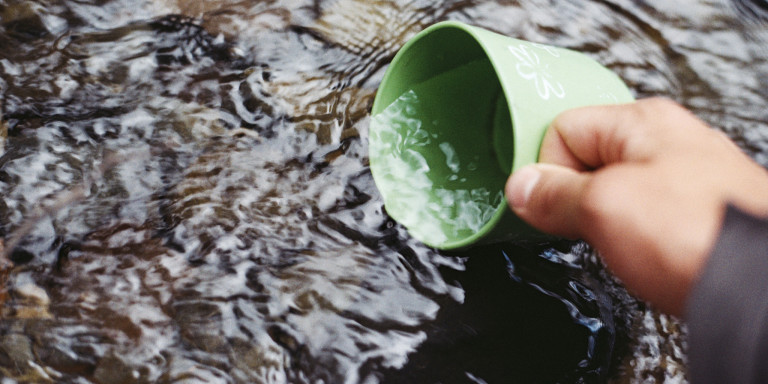(as seen in the Green Living Journal, Fall 2015)
Reduce: the first R
Let’s talk about reducing your consumption of one of life’s necessities – water. If you think back to a basic science class, remember how the teacher said that water is a finite resource, meaning that all the water we have now is all the water there is. Or another way to think about this is that there’s only so much fresh water available and that’s ALL. That’s pretty difficult for us to comprehend when the water gushes out of the tap when we turn it on. http://environment.nationalgeographic.com/environment/freshwater/freshwater-crisis/
Whose water is it anyway? What would you do if you had to limit your use of water? How would you decide the priority of use –lawn and plants, laundry, washing dishes, bathing, flushing, the swimming pool…. There are many simple practices for reducing the amount of water used at home. Here are some of the things we do:
We catch water. What does that mean? While we’re waiting for our water to get hot for washing dishes or for showering, we use a bucket to catch the water that would go down the drain. We have a large stainless steel bowl that we catch some of the water in and use it for cooking water, and filter it for drinking water. Because we live in rainy western Oregon, in the winter we also use this water to flush our toilets. Year-round we practice what I refer to as “drought flushing” – also known as “if it’s yellow, let it mellow. If it’s brown, flush it down.” (I call it drought flushing because I first heard of it one summer in the Seventies when we were experiencing a very dry spell, and citizens were asked to cut water use.) In the summer, we use this water in the flower pots and vegetable/garden beds. And since we have had a particularly hot summer this year, I’ve used a pot or bucket in the sink to catch the dish-rinsing water, too. So one of the best things you can do is get yourself a bucket or two.
We also limit the length of our showers to about five minutes. We have a water-efficient shower head that allows us to reduce the flow – I actually find the reduced flow more calming than the full-volume rush of water. I used to take a bath every night growing up and until I became more educated about resource use. Now I can’t justify using that many gallons daily……. My husband goes even further in saving shower water by taking Navy showers – he gets wet, turns off the water, soaps up, then turns the water back on to rinse off.
Many folks complain about their water bill. All the water that goes down the pipes goes to a water treatment facility which of course costs money to run. But you can control some of those costs by being conscious while using water, resulting in lower bills. Catching water and reducing flushing are simple ways to cut down on your water consumption. Remember, the water we use for flushing and for watering our gardens is clean, potable water. In many countries of the world, they have to carry water to their homes (water weighs eight pounds per gallon); they are agog that we use this clean water for flushing our toilets and for washing our cars. If we had to carry our water, I have no doubt our habits would change. Here’s a link that explains how water treatment facilities work; while it’s from a facility in Canada, it is informative and entertaining: https://www.youtube.com/watch?v=oaXth88i7rk
No matter what steps you decide to take, it all matters. Put all those actions together and you accomplish a lot and feel good about what you’re doing at the same time. And, if you just happen to mention to others what you’re doing, who knows, they might start doing it, too.
More ways to reduce your household water waste:
- Be in the moment – that means pay attention when you’re using water. Think about where it comes from and where it goes. I think about what a privilege it is to have clean water so readily available.
- Turn off the faucet when brushing your teeth or washing the dishes instead of letting it run down the drain to the water treatment plant.
- Water your yard the correct amount – check with your local extension agency for recommendations.
- Consider planting native plants that are adapted to the seasons in your area; they require less water. And reduce the size of your lawn.
- When you boil or steam food, rather than pouring that water down the drain, cool it then put it in the bucket for the garden.
Here are some links with more tips for reducing your water waste:
A link about how much water it takes to produce common foods: http://www.huffingtonpost.com/2014/10/13/food-water-footprint_n_5952862.html
http://environment.nationalgeographic.com/environment/freshwater/water-conservation-tips/
https://www.your-rv-lifestyle.com/save-water-rv/
http://www.home-water-works.org/water-conservation-tips

